| Home > Policy > White Paper, Notice, Announcement > White Paper > Annual Report on the Promotion of Science and Technology 2002 > Part1 Chapter3 Section2 2 | ||
Another role of universities in creating innovation is the development
of human resources to contribute to innovations, such as researchers, engineers
and corporate managers. In particular the development of creative research personnel
for the next generation is vital for the creation of innovations, and companies
have the greatest expectations for universities.
Creative research and development is often born from the wealth
of ideas of young researchers, and it is known that Nobel Prizes have most often
been awarded for achievements made in people's 30s and early 40s. Looking at
the age distribution of university teaching staff, which may be termed the research
personnel of universities, there is a conspicuously low percentage of young researchers
in their early 30s.
In recent years, despite the severe employment situation of recent times, we have seen increasing demand for human resources with specialized knowledge and skills, and an increasing tendency for companies to place emphasis on mid-career employment, the adaptable fighting potential of companies. Meanwhile, the percentage of graduates of doctoral courses in Japan who find employment has been falling as the years go by, so it is likely that the needs of companies does not match human resources development, and postgraduate education is not necessarily satisfying the needs of companies in elements of occupational education.
With regard to wide-ranging science and technology human resources, to lower the employment "mismatches," the division of roles between faculty education and postgraduate education is important. On one hand, education systems must have diversity and flexibly to allow specialist education from on early stage to develop people with outstanding specialist capabilities. It is also important to alleviate the economic burden on postgraduate education, while at the same time providing young researchers with the opportunity for research, in research with companies and in national projects ( Fig. 8 ).
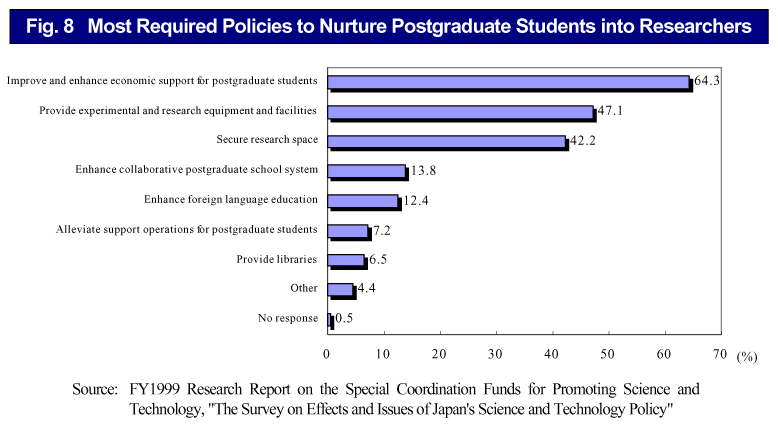
In the Second-term Science and Technology Basic Plan, the policy to promote increased mobility of researchers is set forth, but mobility of researchers in Japan is extremely low, with the majority of researchers aged under 35 years of age only having experienced one institution ( Fig. 9 ).
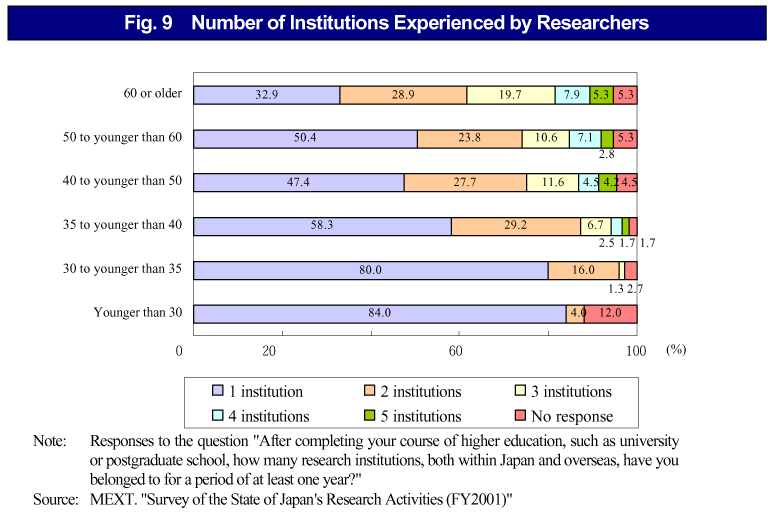
In particular, looking at Table 10 , even researchers who have moved between at least two institutions have little experience in different divisions, and it is clear that there is little activity in movements between different divisions.
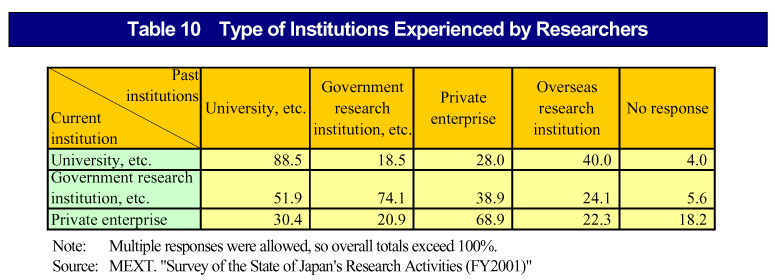
In the background to this low mobility of researchers in Japan a large part can be attributed to the strong impact of traditional Japanese employment practices, with the lack of provision of social systems, and opinions indicating the importance of stable employment ( Fig. 11 ). It is therefore important to create an environment in which the capabilities of researchers can be brought into full play under diverse options and evaluations, while bringing into view the best way forward for Japan's employment system as a whole, and the mobilization of international employment.
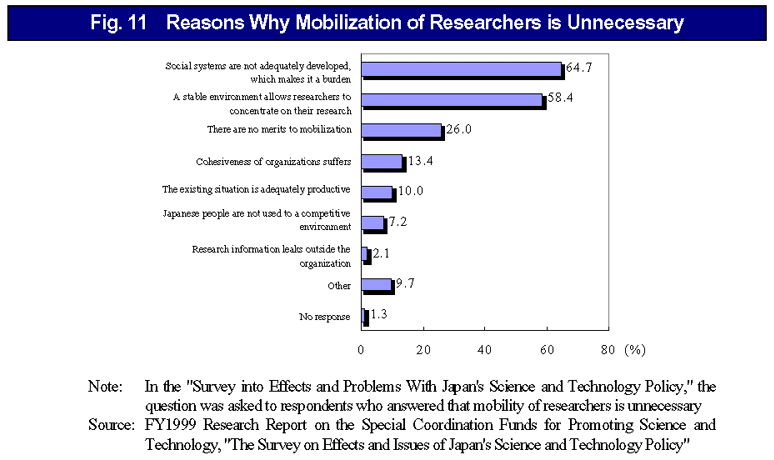
The advances in globalization and shift to a knowledge-based economy which have taken place in recent years, there are concerns not only for the hollowing-out of production bases and research bases, but a hollowing-out of human resources due to the so-called "brain drain," and countries are tackling the development and securing of research personnel with originality to form the core of innovation to combat this phenomena as an important national strategy.
In recent years we have seen an increase in the number of researchers staying overseas for long periods (at least 3 months), centering on North America, and the number of researchers taking up permanent postings abroad is also increasing ( Fig. 12 ).
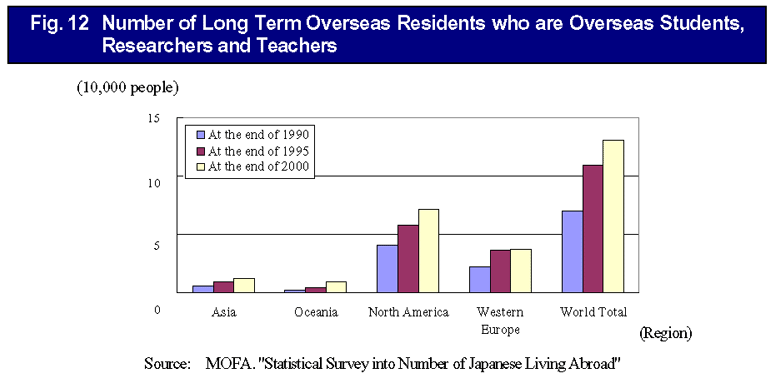
Having investigated the percentage of foreigners who have obtained PhD's in the US and who plan to remain in the US after their study, although the percentage is still lower for Japan than for India, China and the UK, it has been increasing since 1994, particularly for the natural sciences ( Fig. 13 ).
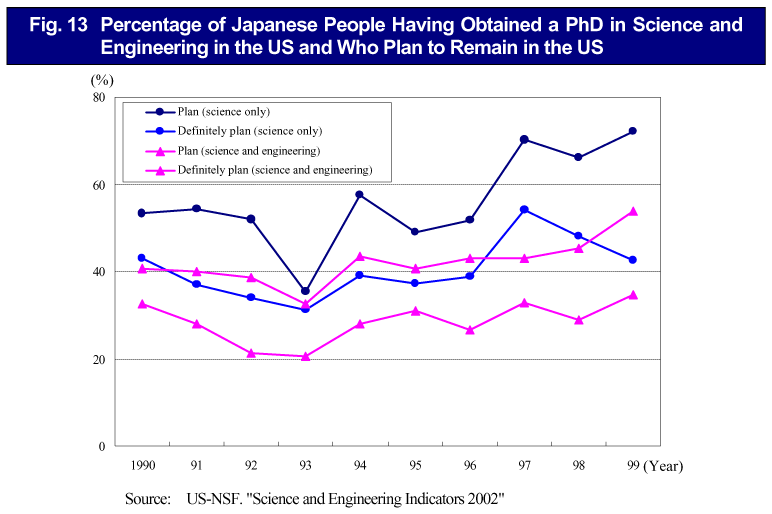
In the background to this increasing desire to reside in the US, it is possible to imagine that researchers are searching for a more satisfying research environment.
With the variety of policies being taken to capture and secure outstanding human resources, it is necessary for Japan too to put in place a research environment that is attractive to research personnel from within Japan and overseas.
| Back to Top | MEXT HOME |